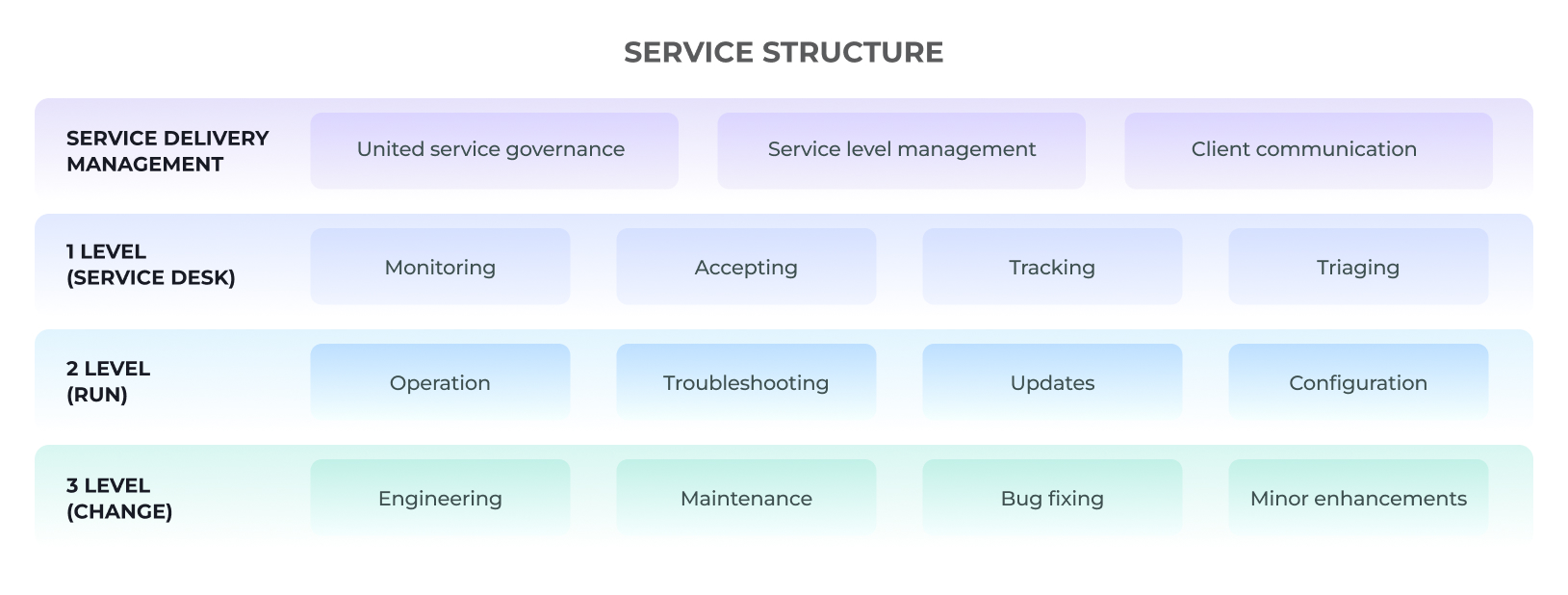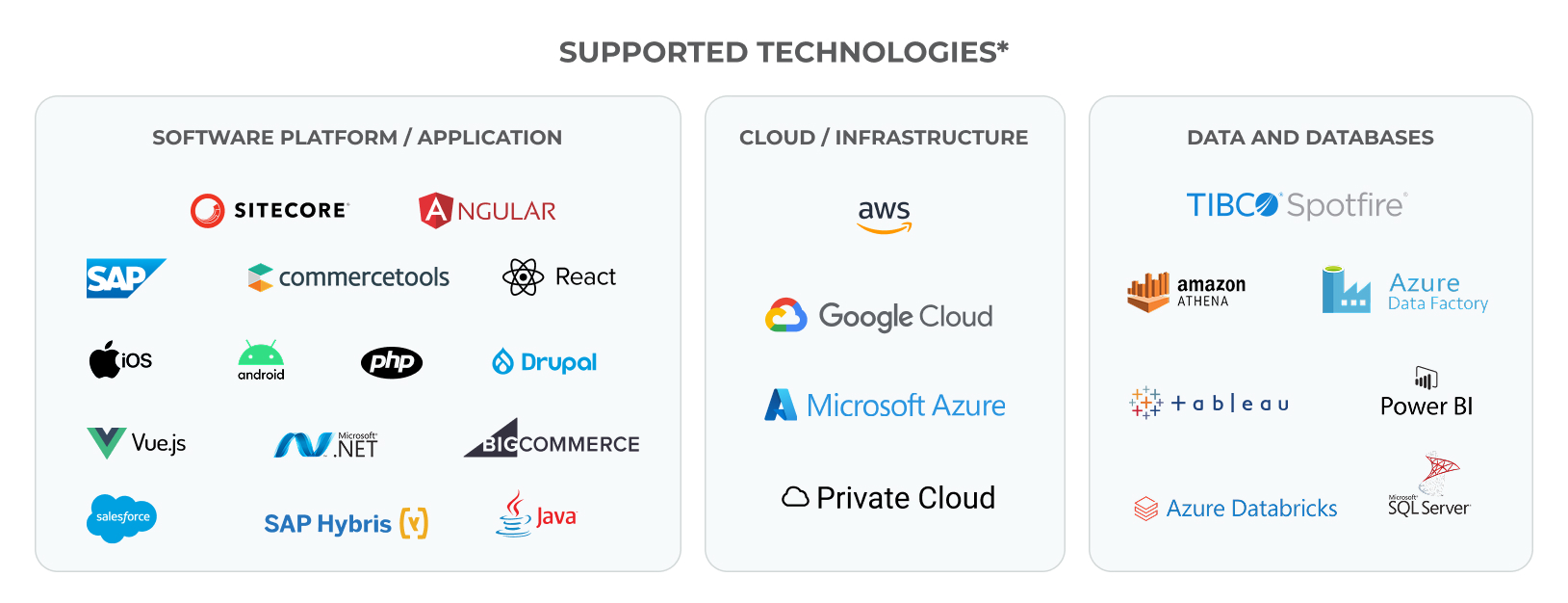What is DevOps all about? At its core, DevOps as a managed service is all about cooperation between your development and operations teams. Plus, DevOps and managed services can help automate tasks, help security teams fix problems quicker, make the software better, and speed up approval times, which makes the whole process more efficient. Sometimes, you just need a dedicated DevOps or a good managed DevOps service to keep everything running smoothly and help you easily make all your deadlines. Deciding on the right services plan is often the first step.
If you want to improve your software development process, you should think about getting help from a DevOps as a service company such as Dedicatted. We provide services like DevOps consulting and managed cloud services that can seriously improve your workflow and increase efficiency by uniting development and operations. As a DevOps managed service provider, we believe that automation with version control can help your DevOps Company avoid errors and get better results. Choosing fully managed DevOps makes everything simpler and easier to get work done on time. You’ll find many different managed service plans available, sometimes including related things like analytics managed services. Here at Dedicatted, we’re always trying to ensure customer satisfaction with our managed services for DevOps, while keeping our rates competitive.
DevOps Consulting
Thinking about DevOps consulting? Then you’re on the right track because if you want to implement DevOps, you need to get it right the first time. That’s where Dedicatted comes in. Our DevOps company brings a fresh perspective to your business that will help you find the right path forward. We’ll dive deep into your business plan and current setup to make certain that all of our recommendations are in line with your business goals.
AWS Cloud Managed Services
If you’re looking for DevOps as a service or a reliable managed services AWS you should definitely check out the options within AWS. Now you might be wondering, what is AWS managed services? Basically, with AWS managed services, you can enjoy all the benefits of a DevOps setup without having to manage the infrastructure. Sounds good right?
These services are scalable and reliable and since AWS cloud managed services offer features like auto-scaling and self-healing, they are the perfect fit for any DevOps Company looking to make their workflow better. For those of you looking for flexibility and a dedicated DevOps approach, then you should check out managed services for AWS as it’s a really good solution for getting everything to run smoothly and efficiently, which allows you to meet all those deadlines.
Azure Managed Services
Looking to make things easier for your developers in Azure? With Azure DevOps, a cloud-based service, your developers will have access to a toolset that will allow them to plan, track and manage software development services in an efficient manner. Your developers can then use these tools, with help from Azure DevOps managed services providers to build, test, and later deploy applications to the cloud.
The fact that it’s cloud-based also brings the benefits of an Azure managed service to you, meaning that you won’t have to worry about infrastructure anymore. This approach is a key part of Azure cloud managed services. This is a really good for any DevOps Company looking for tooling on a managed . In addition to this, if you are looking for managed services for Azure or just wish to work with an Azure managed service provider, you’ll quickly see that this is pretty much the foundation of their strategy. With Azure forming a solid foundation, the goal of DevOps as a service will be reached easily, with the benefit of smooth and efficient operation.
Google Cloud Managed Services
If you need assistance with implementing DevOps in your company, then a DevOps engineer is the right person to call. For a successful DevOps company, the right people on your team are the key to success. A great engineer is someone who has extensive knowledge about your software development and the operations you do. Having dedicated DevOps focus can be really helpful if you want to get things done right. The best engineers are those who know the right tools, or even how they interact with Google managed services. If your infrastructure uses the cloud, knowledge about Google cloud platform managed services would be a huge plus for them. A talented engineer working alongside a Google cloud managed service provider can greatly improve your software development as well as your company’s efficiency and profits. So no matter if you’re planning on hiring internal teams or getting assistance with Google cloud managed services, hiring a skilled DevOps engineer will be extremely helpful to your company.
Service Provider Company
Choosing the right partner for your business is more than going with a seller who has a cool presentation. You have to pick a team that’s obsessed with making sure everything goes smoothly and according to plan. After completing dozens of digital transformation projects, we’ve realized that even though no two projects are the same, many issues are. These include things like release bottlenecks, fragile code, snowflake servers, and problems with keeping track of what’s happening. Our fix for this is a practical and strong DevOps-as-a-service model that’s run by certified experts who work closely with your teams. Instead of having high upfront costs, this model gives you steady and predictable operating expenses. That way, decision-makers can easily see the total cost while making sure they get top-notch service.
As a highly specialized service providers in the region, we make our success dependent on yours with outcome-based contracts. It doesn’t matter whether your goal is making e-commerce rollouts quicker or keeping regulated workloads compliant. From day one we map value streams, baseline your DORA metrics, and create a plan that ends up paying for itself through quicker lead times and lower failure rates.
The variety of our services is what makes us stand out from the crowd. While many cloud companies only specialize in a single vendor, the new architectures have to work on AWS, Azure, and Google Cloud. Our expertise allows us to pick the best services for you such as EKS for container orchestration, Azure DevOps Boards for planning, or GCP’s Artifact Registry for binary management. Many growing and established companies trust us when it comes to re-architecting old systems, enabling blue/green releases, and making GitOps a part of their day-to-day activities.
Finally, we believe that just providing awesome resources is not enough. This is why we mentor your developers, SREs, and security champions to make sure those new habits will stay with them for a long time. At the end of the day, you’ll have a delivery engine that will keep up with all of your needs. We’re a true service provider, and we’ll always put your interests first. As a service company that always looks into the future, Dedicatted delivers value and improvements that align with all of your objectives and strategies.

















